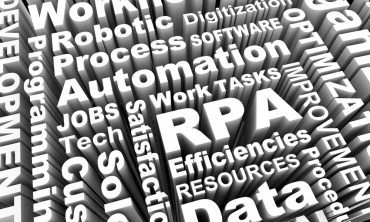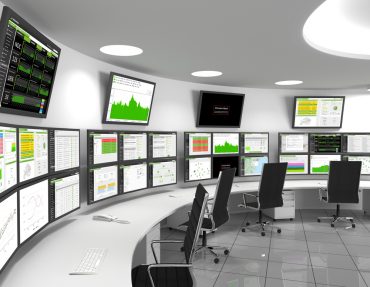
Graph analytics needs computational muscle to work quickly and efficiently to uncover hidden patterns and relationships.
Businesses seek to make informed decisions based on more and new data types in today’s data-driven world. Unfortunately, traditional analytics methods are not well-suited to certain classes of data and in some problem areas. Increasingly, businesses need new analytics techniques that help extract information from different datasets. One of the fastest-growing areas of interest is that of graph analytics.
The graph analytics market is expected to reach $2.03 billion by 2027, growing at a compound annual growth rate (CAGR) of 19.1% from 2019 to 2027, according to recent market research. Gartner tagged graph analytics as one of its top ten trends last year. It noted, “By 2023, graph technologies will facilitate rapid contextualization for decision making in 30% of organizations worldwide.” It further noted that businesses should consider investigating how graph algorithms and technologies can improve their AI and ML initiatives.
Why the great interest? Graph analytics helps identify relationships between entities in a dataset and the strength of the relationship between different entities. A simple example is examining the connectivity and influence between members of an organization or a social media group. These relationships are more easily found when the information is represented in graphical form. There, one can see, person A knows B, C, D, and E. Person B knows X, Y, Z. Such a view of the data provides insights into extended relationships between A and X, Y, and Z.
Anatomy of a graphical database
Certain datasets lend themselves to graph analysis. They are typically sparsely populated and not rigidly structured. For example, when it comes to entities in a group, person A might have this title, expertise in these five fields, and certifications in two areas. Every other person would have a different combination. If a company wanted to put all that information into a structured database, there would be endless rows or columns to cover every possible title, areas of expertise, and certifications. Most entries would be blank. And if, for example, a new certification became important, the database would need to be restructured.
Graph analysis avoids these problems. It does not require that every possible combination of titles, expertise, and certifications be pre-defined and hard-coded into the database structure. It has applications in many fields. For that reason, graph analytics is a great way of dealing with data that a company does not understand yet.
Formerly, graph analytics provides techniques to explore the relationships between entities. The entities are mapped into a graph that consists of nodes, edges, and properties to accomplish this.
A node is each entity (e.g., person A). A relational database would represent this as a record or a row of data.
Edges characterize the relationship between nodes. For example, an edge can demonstrate that A knows B, B knows C, etc. Edges can convey more information than simply association. For example, an edge can have a direction (person A reports to person B) and a magnitude (person A know B directly vs. via an intermediary). Relational databases do not capture this information.
Properties are the extra information such as a person’s title and certifications. A relational database might represent this information as columns.
Data is mapped using these elements. And graph analytics explores the relationships between the nodes. Compared to a relational database, a graph database is an optimized way to represent and analyze a network of relationships.
With such data that is sparse and unstructured, graph algorithms are needed. You could use SQL, but it would just be very inefficient because SQL is not intended for these sorts of sparse unstructured datasets. Graph analytics works quickly and efficiently to uncover hidden patterns and relationships.
Graph analytics use cases
Graph analytics has applications in financial, telecom, security, health, life sciences, and many more markets. For example, pharmaceutical companies use graph analytics and graph mining to develop knowledge graphs for faster drug discovery or more in-depth analysis. In such an application, knowledge graphs connect all relevant chemical, biological, clinical research, patient information, medical journals, and all pertinent data such as drug side effects and the genetic information of the patients and users.
In the financial, banking, and FinTech sectors, graphs analytics are used to combat fraud or detect money laundering schemes. In telecom, some carriers are using graph analytics for spam detection and for providing more precise services to subscribers.
An emerging area for the technology is the use of graph analytics in workflows for designing electronic circuits on chips. The gates or pins are the vertices, and the wires are the edges of the graph. Graph analytics can do many things, like partitioning the circuit, placing the gates, and wiring the gates faster than can be done with current approaches.
Addressing graph analytics computational issues
These knowledge graphs can lead to discoveries and new ways of tackling old problems. All the information in these applications quickly becomes large, connected data.
Analyzing such information is a compute-intensive exercise that depends on the size of the data, the number of nodes, the number of edges, and the algorithm. Traditional compute approaches can scale-up, but often do not scale-out efficiently. New efforts seek to address these issues.
Specifically, Katana Graph announced a collaboration with Intel to port and optimize the Katana Graph Engine (KGE) on Intel Xeon Scalable processors and Xeon-based clusters and the upcoming line of Intel discrete GPUs.
Based on the Galois system developed at the University of Texas at Austin, the KGE enables high-performance parallel computations on large-scale problems with unstructured data. It runs on both CPU and GPU platforms and scales to hundreds of machines in production clusters.
Katana Graph accomplishes this because it has a high-level programming model and a runtime system specialized for applications that deal with graphs and hypergraphs. Its analytics libraries are orders of magnitude faster than other solutions.
The collaboration between Katana Graph and Intel seeks to accelerate the adoption of graph analytics, enabling more businesses to take advantage of this insightful technique.
To learn more, read: Computational Requirements of Graph Analytics and How to Meet Them.







